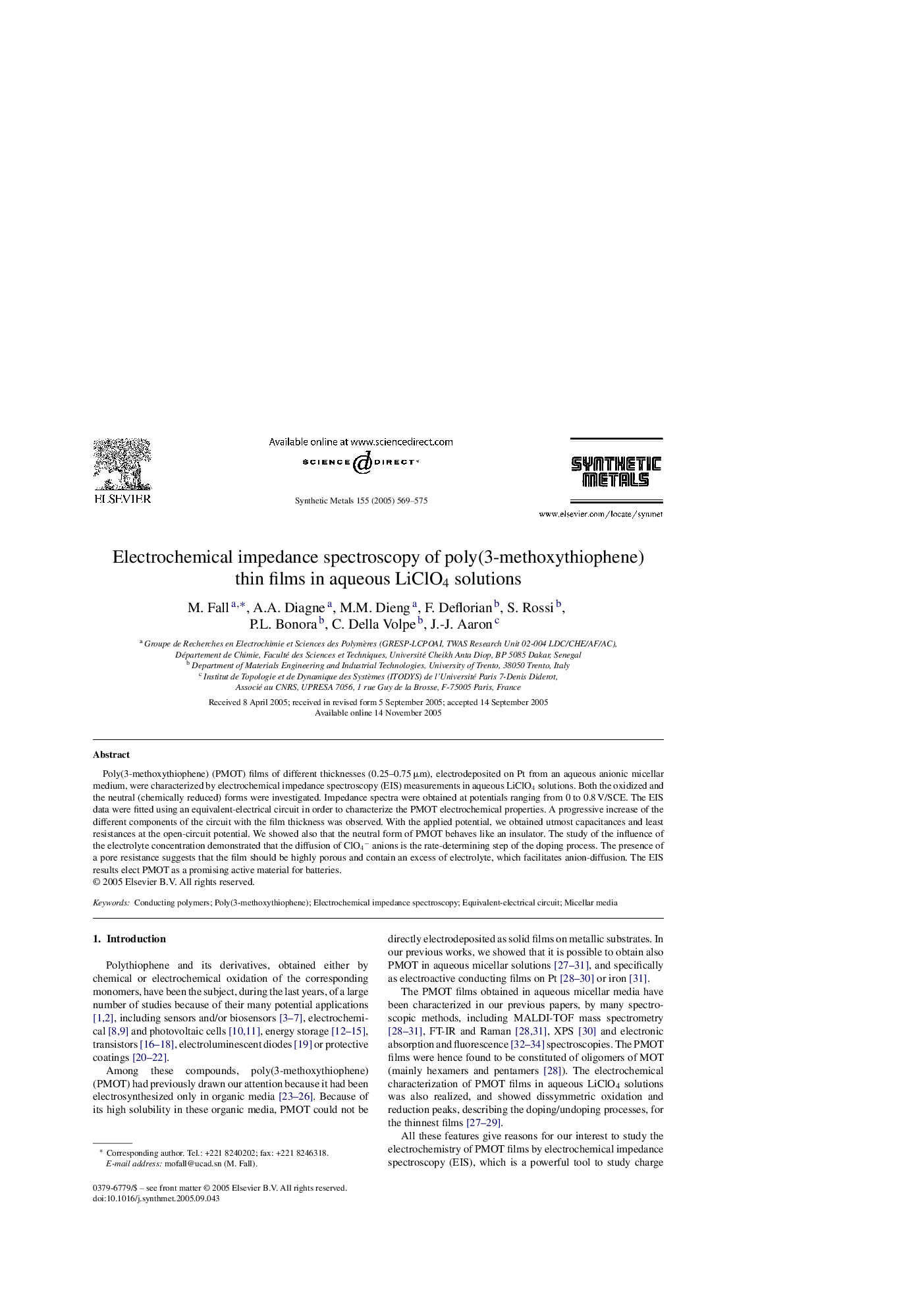| Article ID | Journal | Published Year | Pages | File Type |
|---|---|---|---|---|
| 10619060 | Synthetic Metals | 2005 | 7 Pages |
Abstract
Poly(3-methoxythiophene) (PMOT) films of different thicknesses (0.25-0.75 μm), electrodeposited on Pt from an aqueous anionic micellar medium, were characterized by electrochemical impedance spectroscopy (EIS) measurements in aqueous LiClO4 solutions. Both the oxidized and the neutral (chemically reduced) forms were investigated. Impedance spectra were obtained at potentials ranging from 0 to 0.8 V/SCE. The EIS data were fitted using an equivalent-electrical circuit in order to characterize the PMOT electrochemical properties. A progressive increase of the different components of the circuit with the film thickness was observed. With the applied potential, we obtained utmost capacitances and least resistances at the open-circuit potential. We showed also that the neutral form of PMOT behaves like an insulator. The study of the influence of the electrolyte concentration demonstrated that the diffusion of ClO4â anions is the rate-determining step of the doping process. The presence of a pore resistance suggests that the film should be highly porous and contain an excess of electrolyte, which facilitates anion-diffusion. The EIS results elect PMOT as a promising active material for batteries.
Keywords
Related Topics
Physical Sciences and Engineering
Materials Science
Biomaterials
Authors
M. Fall, A.A. Diagne, M.M. Dieng, F. Deflorian, S. Rossi, P.L. Bonora, C. Della Volpe, J.-J. Aaron,
